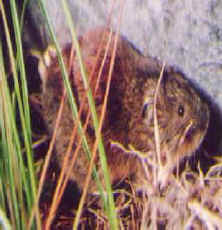Polar Problems, Continued
International Polar Year Update
Main Site
http://www.ipy.org/
Australia Antarctic Update
http://www.aad.gov.au/default.asp?casid=35204&source=5023&rank=1
http://www.aad.gov.au/default.asp?casid=21915
Ocean Exploration
http://thejr.org/
Polar Project Make-Up Work
This page: Make-up Page as of 10/22: https://whatelse.pbwiki.com/Polar+Make-up
If you have work to make-up, here are the links and directions. Some of you may have grades you would like to improve. Find your assignment here.
Our Polar Project Home Page
http://whatelse.pbwiki.com/Polar-Problems
Learning Goals
Use the writing process to gather ideas, draft information, revise for clarity, edit for readability, and publish for persuasion.
Understand how life adapts to live in the Arctic. Understand what affects life in the Arctic. Anaylze the connection of those effects on the Arctic, our community, and in the world.
Gathering Ideas: Research Strategies Review
Prewriting Strategies to create researched presentation: research, paraphrasing, key words, spelling, citing sources, draft, summaries, gist
Project Work:
October: Research
Research an animal or people of your choice (see project home page)
Be prepared to share their findings with the class about:
* Size
* Habitat
* Diet
* Predators
* Adaptation to the environment (behavioral and biological)
* Environmental Threats to survival
* Connections of environmental issues to your life
* Connections of environmental issues to world communities
9/9 Write a gist statement
A GIST STATEMENT is 20 word summary statement of ALL the main ideas you have learned so far.
10/2 Anecdote with strong verbs
Write as if you are your people or creature. Be the animal. Make your life come alive. Read over your "lively" writing about your creature. Revise it with strong verbs. Share.
https://whatelse.pbwiki.com/Strong-Verbs
10 7-8 Write a gist statement
Write a gist statement on what you have learned from your research so far.
Mid-October: Research Global Warming
Links:
http://news.nationalgeographic.com/news/2005/07/0727_050727_globalwarming.html
This site is very difficult, but you can try it:
http://www.ncdc.noaa.gov/oa/climate/globalwarming.html
Other links we have in our project page:
How does global warming work?
http://environment.nationalgeographic.com/environment/global-warming/gw-impacts-interactive.html
http://www.msnbc.msn.com/id/19463513/
http://environment.nationalgeographic.com/environment/global-warming/
http://environment.nationalgeographic.com/environment/global-warming/gw-overview.html
10/15 Gist Statement.
10/ 15 DRAFT
Write a draft of your ideas so far. Use paragraphs.
* What animal is your research about?
* How does your animal survive the Arctic?
* How is global warming affecting your animal?
* How are we as humans contributing to your animal's problem?
* How is the problem of global warming affecting us?
And:
Will what we do change the polar environments?
How do you think these changes may ultimately affect us?
10/20 Synthesis Arctic Paragraphs Second Draft
Write a paragraph that answers these questions using specific facts and details. Use strong verbs and precise nouns. Your paragraphs should not list answers, but include, in its explanation of your research, information that would answer these questions for the reader of your work:
What animal is your research about?
How does your animal survive the Arctic?
How is global warming affecting your animal?
How are we as humans contributing to your animal's problem?
How is the problem of global warming affecting us?
Will what we do change the polar environments?
How do you think these changes may ultimately affect us?
MORE LINKS FOR YOUR ANIMAL RESEARCH
More Links for Future Research (You may start ahead of time)
Arctic Adaptations
http://www2.ic.edu/beal/ecobiome.html
http://www.runet.edu/~swoodwar/CLASSES/GEOG235/biomes/tundra/tundra.html
Polar Bear
http://www.washington.edu/burkemuseum/polarbear/polar.php
http://www.polarbearsinternational.org/
"In the Arctic winter the predominant background color is white. The temperature is extremely cold so animals have adapted for survival. The polar bear looks white and this adaptation protects the bears from being seen by predators. The polar bear’s top fur is actually transparent, hollow hair shafts. There is a dense ‘woolly’ undercoat. (The bears also have a layer of blubber under their skin.) Air is trapped in the hollow hair shafts and this provides insulation for the bears. The hairs reflect the light so that the color of the bear looks white. The hair does not mat so that ice and water can be shaken off easily. The polar bear’s skin is black. Black absorbs light wavelengths so that the skin absorbs the warmth from the light and holds it instead of reflecting it away from the skin."
Source: http://www.utmsi.utexas.edu/staff/dunton/k12/Polar%20Bear%20Adaptations.htm

Arctic Fox
http://ths.sps.lane.edu/biomes/tundra3/tundra3.html#Animals
http://lsb.syr.edu/projects/cyberzoo/arcticfox.html
http://www.csulb.edu/~jmastrop/data1.html
http://bioweb.uwlax.edu/bio203/s2008/olson_alex/interactions.htm
http://bioweb.uwlax.edu/bio203/s2008/olson_alex/adaptation.htm

Puffin
http://www.cdli.ca/CITE/puffins.htm
" While it is well known that marine mammals such as whales, seals, and polar bears have thick layers of fat to help keep them warm, northern seabirds such as puffins also rely on internal layers of fat to help them survive frigid Arctic waters. This fat, combined with their external water-repelling and air-trapping coat of feathers, allows seabirds to live in a seemingly harsh environment. (Older students could research other adaptations to the cold, for birds as well as other life forms.) "
http://people.eku.edu/ritchisong/554notes3.html scroll down
http://www.geocities.com/EnchantedForest/Cottage/4304/puffin/information.html
http://www.athropolis.com/arctic-facts/fact-puffin.htm
http://www.audubon.org/bird/boa/F44_G1c.html
http://www.abirdshome.com/Audubon/VolVII/00766.html

Porcupine Caribou
http://arcticcircle.uconn.edu/ANWR/anwrcaribou.html
http://home.gwu.edu/~gwg/adventure/wild.html
http://www.presidency.ucsb.edu/ws/index.php?pid=30240
http://e360.yale.edu/content/feature.msp?id=2032
http://books.nap.edu/openbook.php?record_id=10639&page=132


Collared Lemming
http://www.adfg.alaska.gov/pubs/notebook/smgame/lemmings.php
http://homepage.eircom.net/~snowland/snowanimals.htm
http://www.journals.uchicago.edu/doi/abs/10.1086/381940
http://www.wildlifenews.alaska.gov/index.cfm?adfg=wildlife_news.view_article&articles_id=31&issue_id=10
http://www.taiga.net/yourYukon/col407.html
http://www.britannica.com/bps/browse/alpha/d/60#search=tab~TOPICS%2Cterm~collared%20lemming

Comments (0)
You don't have permission to comment on this page.